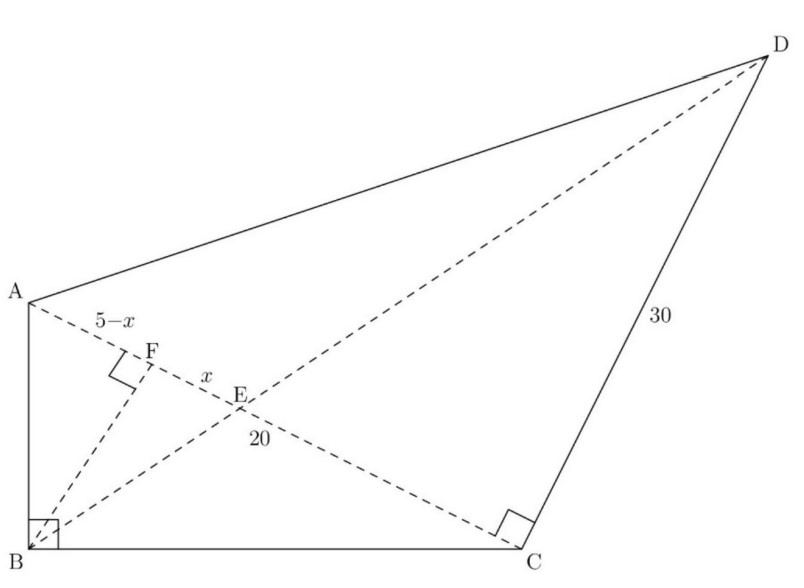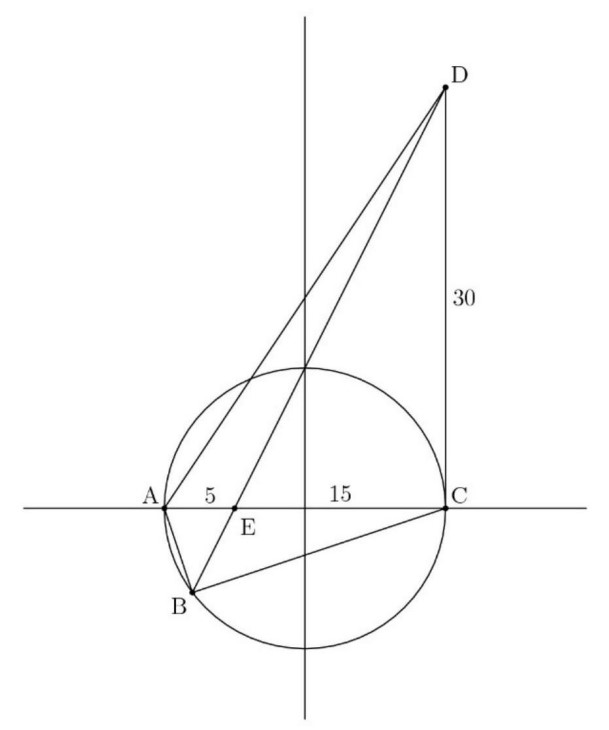Problem:
Quadrilateral AECD satisfies ∠ABC=∠ACD=90∘,AC=20, and CD=30. Diagonals AC and BD intersect at point E, and AE=5. What is the area of quadrilateral ABCD?
Answer Choices:
A. 330
B. 340
C. 350
D. 360
E. 370
Solution:
It's crucial to draw a good diagram for this one.
Since AC=20 and CD=30, we get [ACD]=300.
Now we need to find [ABC] to get the area of the whole quadrilateral. Drop an altitude from B to AC and call the point of intersection F. Let FE=x. Since AE=5, then AF=5−x.
By dropping this altitude, we can also see two similar triangles, △BFE∼△DCE. Since
EC is 20−5=15, and DC=30, we get that BF=2x.
Now, if we redraw another diagram just of ABC, we get that
(2x)2=(5−x)(15+x)
because of the altitude geometric mean theorem which states that in any right triangle, the altitude squared is equal to the product of the two lengths that it divides the base into.
Expanding, simplifying, and dividing by the GCF, we get
x2+2x−15=0.
This factors to
(x+5)(x−3)
which has roots of
x=−5,3
Since lengths cannot be negative, x=3. Since x=3, that means the altitude BF=2⋅3=6, or [ABC]=60. Thus
[ABCD]=[ACD]+[ABC]=300+60=(D) 360
OR
Let the points be
A(−10,0),B(x,y),C(10,0),D(10,30), and E(−5,0)
respectively.
Since B lies on line DE, we know that
y=2x+10
Furthermore, since ∠ABC=90∘,B lies on the circle with diameter AC, so
x2+y2=100
Solving for x and y with these equations, we get the solutions (0,10) and (−8,−6). We immediately discard the (0,10) solution as y should be negative. Thus, we conclude that
[ABCD]=[ACD]+[ABC]=220⋅30+220⋅6=(D) 360
The problems on this page are the property of the MAA's American Mathematics Competitions

